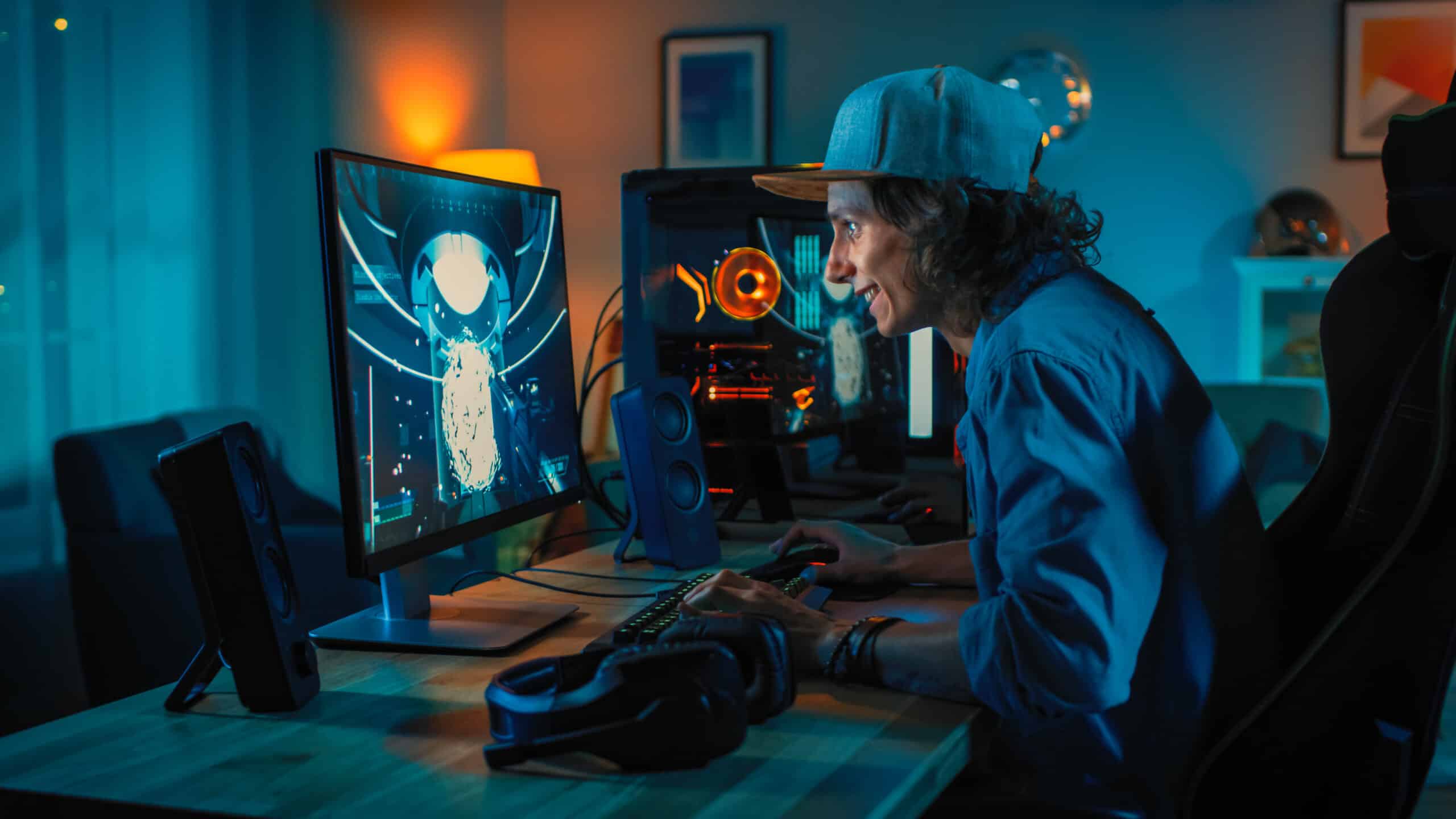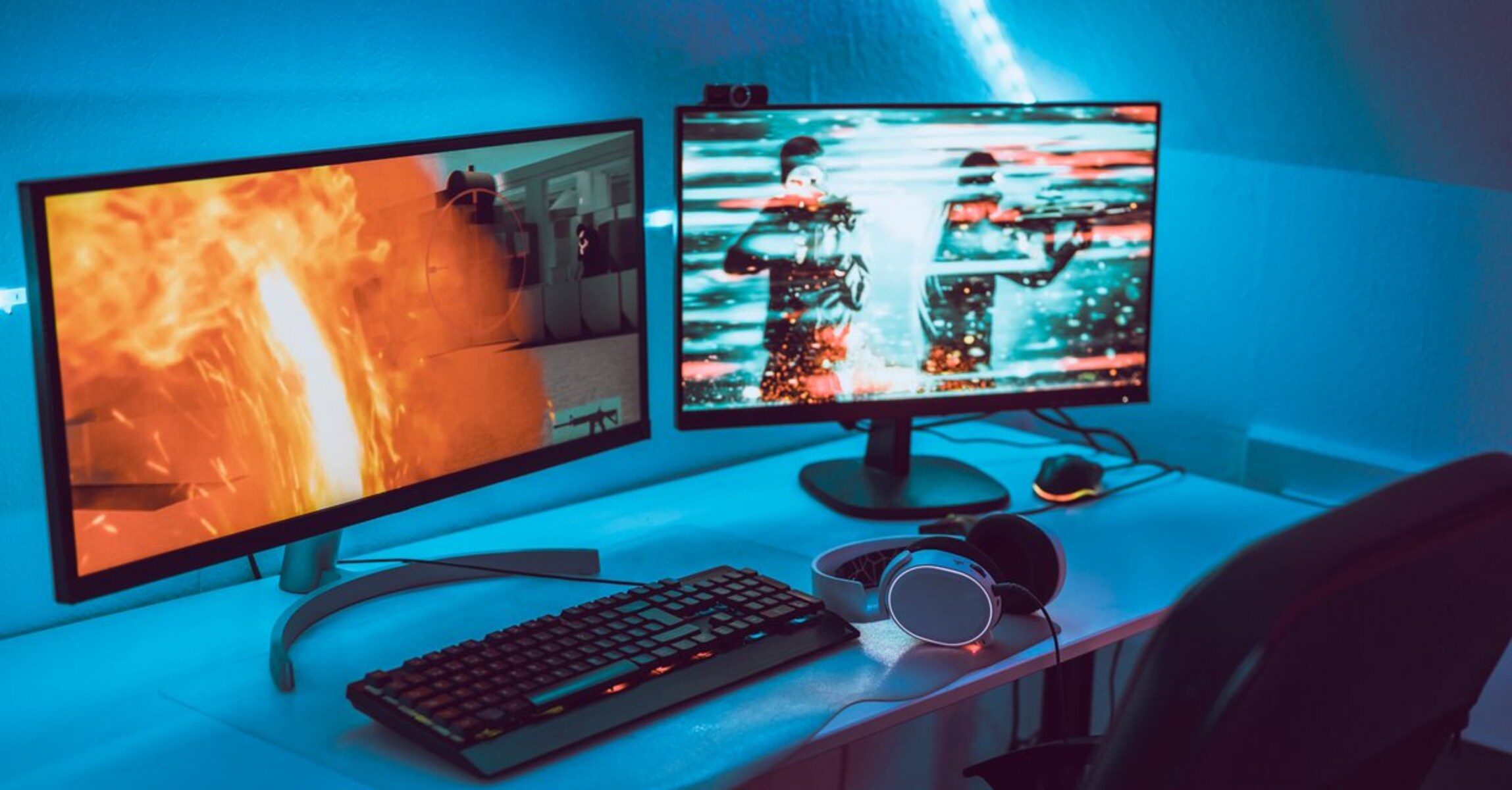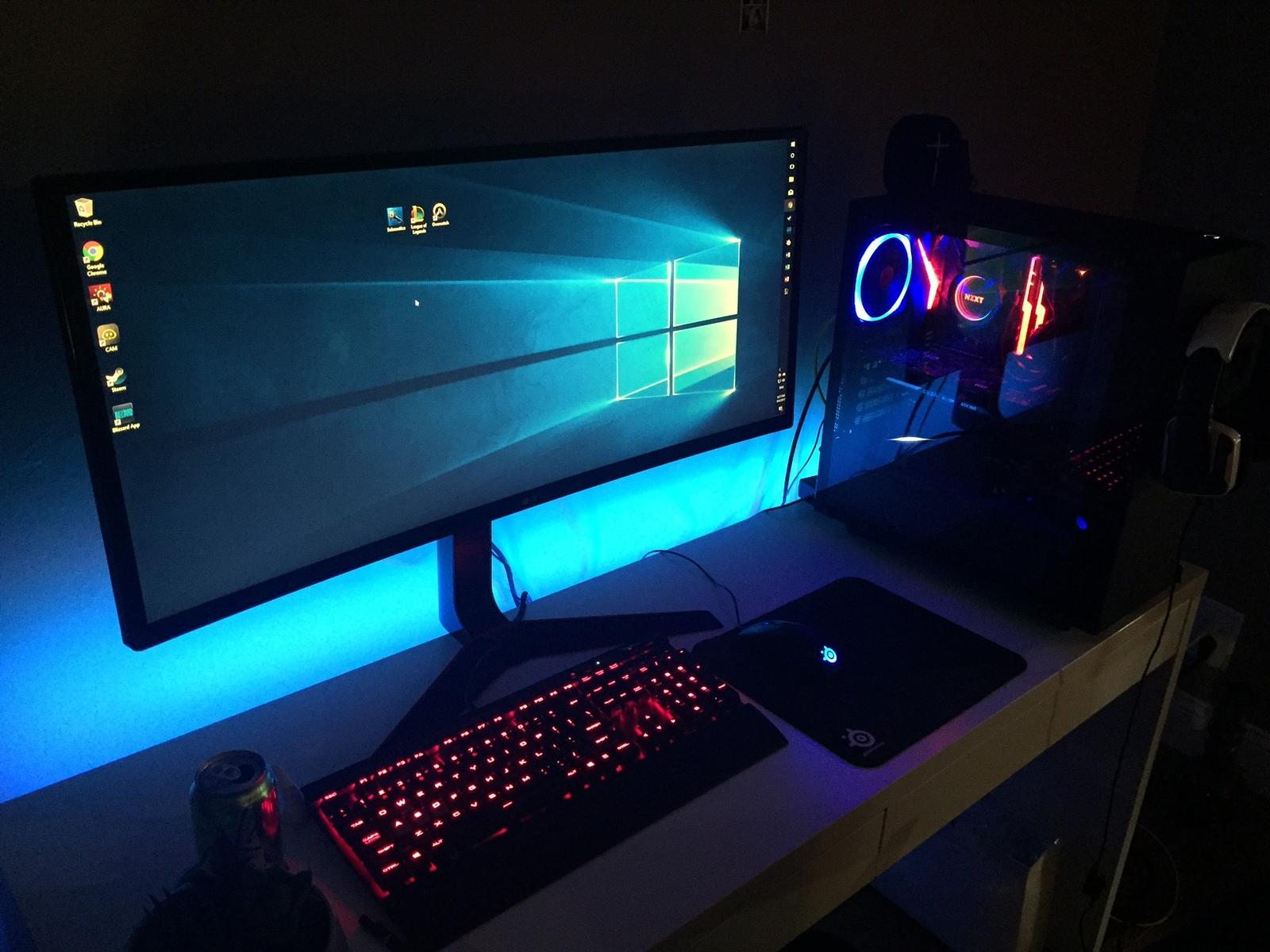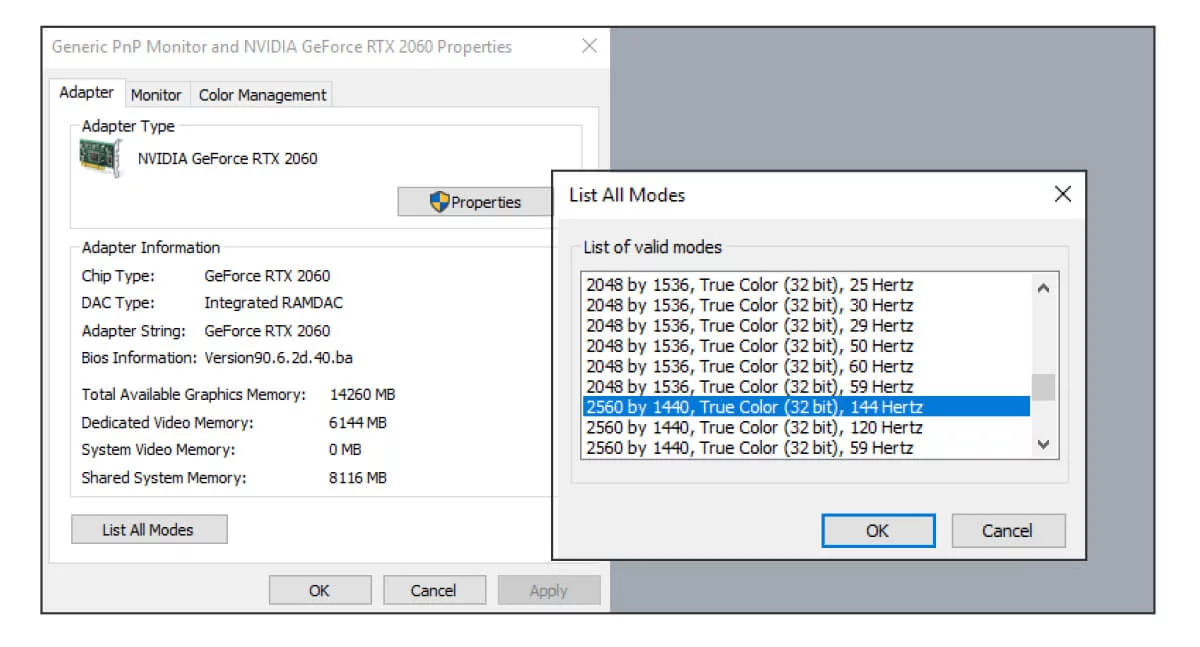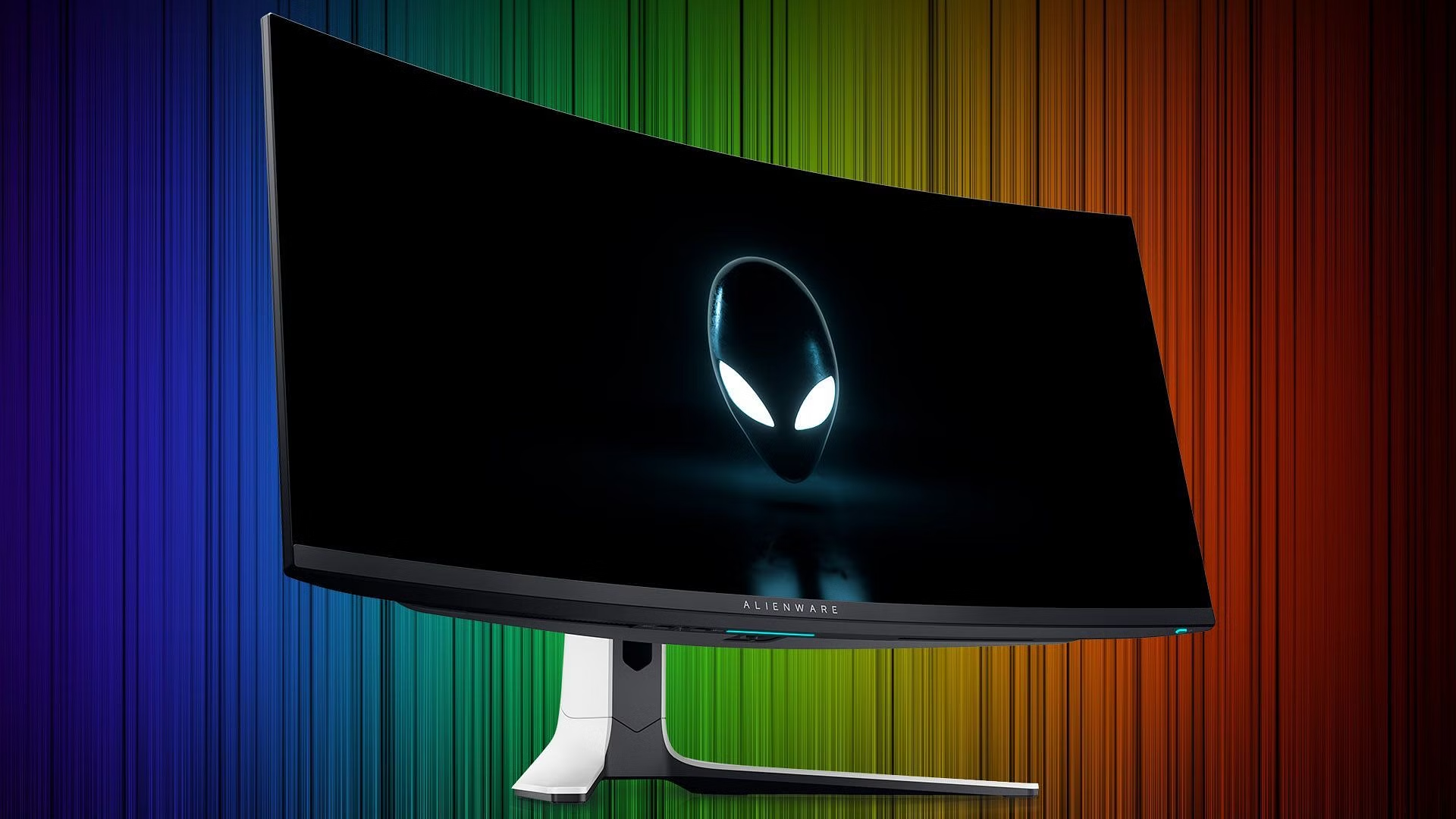Introduction
Gaming has become an increasingly popular form of entertainment, with millions of people around the world immersing themselves in virtual worlds on a daily basis. Whether it’s playing intense first-person shooters, engaging in thrilling racing games, or exploring vast open-world adventures, gamers demand a high level of performance from their gaming equipment. One crucial component that can significantly enhance the gaming experience is the monitor’s refresh rate.
The refresh rate refers to the number of times per second that a monitor updates the image it displays. A higher refresh rate results in smoother, more fluid visuals, particularly in fast-paced action sequences. While 60 Hz monitors have been the industry standard for years, a new era of gaming monitors has emerged with a refresh rate of 144 Hz, revolutionizing the gaming experience for avid gamers.
In this article, we will explore why a 144 Hz refresh rate is considered the standard for gaming monitors. We will delve into how refresh rate affects gaming, the benefits it brings to the gaming experience, and the reasons why 144 Hz has become the go-to choice for gamers worldwide.
What is a 144 Hz refresh rate?
A refresh rate refers to the number of times per second a monitor can update the image it displays. A 144 Hz refresh rate means that the monitor can refresh the image 144 times per second, providing a smoother and more responsive visual experience compared to lower refresh rates like 60 Hz.
When it comes to gaming, a higher refresh rate is crucial for delivering smooth and fluid motion on the screen, especially during fast-paced action sequences. The 144 Hz refresh rate allows for quicker updates, reducing motion blur and enhancing overall visual clarity.
To put it simply, a 144 Hz monitor can display up to 144 frames per second (FPS), resulting in a more detailed and lifelike gaming experience. It ensures that every movement, whether it’s aiming, turning, or navigating through the game world, is captured and displayed with utmost precision and smoothness.
It’s important to note that to fully benefit from a 144 Hz refresh rate, your gaming hardware needs to be capable of consistently delivering 144 FPS or higher. Pairing a high-refresh-rate monitor with a powerful graphics card and a capable processor is essential to fully unlock the potential of a 144 Hz monitor.
Overall, a 144 Hz refresh rate is a significant upgrade for gamers, offering a more immersive and responsive gaming experience, particularly for fast-paced and competitive games. It has become the gold standard for gaming monitors and is widely appreciated by gaming enthusiasts around the world for its enhanced visual clarity and smoothness.
How does refresh rate affect gaming?
The refresh rate of a gaming monitor plays a crucial role in the overall gaming experience. It determines how smoothly and fluidly the visuals are displayed on the screen, impacting gameplay, responsiveness, and visual clarity.
A higher refresh rate, such as 144 Hz, offers several benefits for gamers. One of the main advantages is the reduction of motion blur. With a higher refresh rate, each frame is displayed for a shorter duration, resulting in less motion blur during fast-paced action sequences. This allows gamers to track movements more accurately and react swiftly, giving them a competitive edge.
In addition to reducing motion blur, a higher refresh rate also enhances the overall responsiveness of the game. With a 144 Hz monitor, the time between each frame being displayed is shorter compared to a 60 Hz monitor. This means that the input from the gamer, such as mouse movements or button presses, is reflected on the screen more quickly. This instantaneous response greatly improves the gaming experience, especially in competitive games where split-second decisions and reactions are critical.
Furthermore, a higher refresh rate contributes to better visual clarity. The smoother motion and more frequent image updates result in a sharper and more detailed display. This is particularly noticeable in fast-moving scenes, where the improved fluidity allows for better tracking of objects and enhances immersion in the game world.
However, it’s worth mentioning that the benefits of a higher refresh rate may not be as noticeable in games that have a slower pace or are graphically demanding. In such cases, the increased refresh rate may not have a significant impact on the overall gaming experience.
In summary, a higher refresh rate, such as 144 Hz, positively influences gaming by reducing motion blur, enhancing responsiveness, and improving visual clarity. It offers gamers a smoother and more immersive experience, especially in fast-paced and competitive games that require quick reactions and precise movements.
Why is 144 Hz the standard for gaming monitors?
Over the years, a 144 Hz refresh rate has established itself as the industry standard for gaming monitors. Its widespread adoption can be attributed to several key factors that make it the go-to choice for gamers worldwide.
One of the primary reasons is the smooth gameplay experience it offers. With a higher refresh rate, a 144 Hz monitor can display up to 144 frames per second, resulting in incredibly fluid motion. This seamless experience enhances immersion and allows gamers to react quickly and accurately to in-game situations.
In addition, a 144 Hz refresh rate reduces motion blur, ensuring that fast-moving objects and actions are clearer and more defined. This is especially important in competitive gaming, where even the slightest bit of motion blur can hinder the player’s ability to track targets or dodge incoming attacks.
The increased responsiveness and accuracy are also significant advantages of a 144 Hz refresh rate. With a shorter time between frame updates, input from the gamer, such as mouse movements or button presses, is reflected on the screen without delay. This improves control and gives gamers a more immediate and precise gaming experience.
Furthermore, a 144 Hz refresh rate is compatible with high-performance gaming hardware. With advancements in graphics cards and processors, gamers can now achieve higher frame rates in their favorite games. A 144 Hz monitor allows them to fully utilize their powerful hardware and experience the game as it was meant to be seen.
Moreover, in competitive multiplayer games, a 144 Hz refresh rate provides a significant advantage. It enables gamers to react faster to opponents’ movements and actions, giving them a competitive edge. In games that rely on quick reflexes and split-second decision making, such as first-person shooters or fighting games, the smoothness and responsiveness of a 144 Hz monitor can make all the difference.
In summary, the 144 Hz refresh rate has become the standard for gaming monitors due to its ability to provide a smooth gameplay experience, reduce motion blur, offer responsive controls, and enhance compatibility with high-performance gaming hardware. Additionally, it grants gamers a competitive advantage, particularly in fast-paced multiplayer games. As technology continues to evolve, it will be fascinating to see if even higher refresh rates become the new standard for gaming monitors in the future.
Smooth gameplay experience
One of the primary reasons why a 144 Hz refresh rate has become the standard for gaming monitors is its ability to deliver a smooth gameplay experience. Unlike lower refresh rates, such as 60 Hz, a 144 Hz monitor can update the image on the screen up to 144 times per second, resulting in incredibly fluid motion and seamless transitions.
The higher refresh rate ensures that each frame is displayed for a shorter duration, reducing perceived motion blur and making the gameplay feel more realistic and immersive. This is particularly advantageous in fast-paced games where quick reactions and precise movements are crucial.
By providing more frames per second, a 144 Hz monitor allows for smoother character movements, faster camera panning, and improved overall visual clarity. Gamers can track objects and targets with greater precision, making it easier to aim, react to sudden changes, and navigate through the game world.
In addition, a smooth gameplay experience enhances immersion by eliminating jitters and stutters that can occur with lower refresh rates. The seamless flow of images helps players to stay fully engaged in the game and enhances the sense of being in control of their character.
Furthermore, a higher refresh rate minimizes the perceived input lag, making the gameplay feel more responsive. With each frame being updated more frequently, there is less delay between the gamer’s input (such as clicking a mouse button or pressing a key) and the resulting action on the screen. This responsiveness is particularly beneficial in competitive gaming, where split-second decisions can make or break a match.
In summary, a 144 Hz refresh rate provides a smooth gameplay experience by delivering more frames per second, reducing motion blur, enhancing visual clarity, and minimizing input lag. Gamers can enjoy fluid and immersive gameplay, allowing them to fully immerse themselves in the virtual world and perform at their best.
Reduced motion blur
Another significant advantage of a 144 Hz refresh rate in gaming monitors is the reduction of motion blur. Motion blur occurs when there is a rapid movement on the screen, and the display is unable to keep up, resulting in blurry and less defined visuals.
With a higher refresh rate, like 144 Hz, the monitor can update the image more frequently, reducing the duration that each frame is displayed. This helps to minimize motion blur, making fast-moving objects and actions appear clearer and more defined.
By reducing motion blur, a 144 Hz monitor enables gamers to track objects and targets more accurately, enhancing their gameplay performance. This is particularly important in fast-paced games that require quick reactions and precise movements, such as first-person shooters or racing games.
When navigating through the game world or engaging in intense combat, having minimal motion blur allows gamers to have a clearer view of their surroundings. This improves situational awareness, making it easier to spot enemies, avoid incoming projectiles, or react to sudden changes in the environment.
Furthermore, reduced motion blur contributes to a more immersive gaming experience. By presenting smoother and more detailed visuals, a 144 Hz monitor enhances the sense of realism and makes the virtual world feel more alive. Gamers can feel more connected to the game and have a better understanding of the actions happening on the screen.
It’s worth noting that for the reduction in motion blur to be fully appreciated, the game needs to be able to consistently achieve high frame rates that match or exceed the refresh rate of the monitor. This requires a capable graphics card and sufficient processing power.
In summary, a 144 Hz refresh rate significantly reduces motion blur, resulting in clearer and more defined visuals during fast-paced gaming. This helps gamers track objects and targets more accurately, enhances situational awareness, and contributes to a more immersive gaming experience overall.
More responsive and accurate controls
One of the key advantages of a 144 Hz refresh rate in gaming monitors is the improvement in responsiveness and control. With a higher refresh rate, the time between each frame being displayed on the screen is shorter, resulting in more immediate and accurate control inputs.
When gaming on a 144 Hz monitor, the gamer’s inputs, such as mouse movements or button presses, are reflected on the screen with minimal delay. This reduced input lag enhances the sense of control and makes the gameplay feel more responsive and connected.
For example, in fast-paced first-person shooters, the ability to aim quickly and accurately can often determine the outcome of a firefight. With a 144 Hz refresh rate, gamers experience smoother and more precise cursor movements, allowing them to line up shots more easily and react swiftly to enemy movements.
A higher refresh rate also improves the accuracy of controlling character movements in games that require precise navigation. Whether it’s executing precise jumps, making sharp turns, or performing complex maneuvers, the increased responsiveness of a 144 Hz monitor ensures that every movement is accurately reflected on the screen.
In competitive gaming, where split-second decisions can make all the difference, the improved responsiveness of a 144 Hz refresh rate provides a significant advantage. Gamers are able to react faster to in-game situations, execute complex strategies more effectively, and perform at a higher level.
Furthermore, the increased refresh rate enhances the accuracy of input devices, such as gaming mice. Each movement of the mouse is captured and displayed with greater precision, translating into more accurate aiming and smoother cursor movements.
In summary, a 144 Hz refresh rate in gaming monitors offers more responsive and accurate controls. The reduced input lag and improved accuracy of input devices contribute to a heightened sense of control, allowing gamers to react swiftly and execute precise movements with ease.
Compatibility with high-performance gaming hardware
Another reason why a 144 Hz refresh rate has become the standard for gaming monitors is its compatibility with high-performance gaming hardware. As gaming technology continues to advance, so does the power and capabilities of gaming hardware, including graphics cards and processors.
A 144 Hz monitor is well-suited to handle the higher frame rates that modern gaming hardware can achieve. It allows gamers to fully utilize the potential of their high-performance hardware and experience games at their best.
For example, with a powerful graphics card capable of consistently delivering frame rates above 144 frames per second (FPS), a 144 Hz monitor ensures that every frame is displayed, resulting in a smoother and more immersive gaming experience.
Furthermore, a higher refresh rate minimizes tearing and stuttering during gameplay. Tearing occurs when the monitor’s refresh rate is not synchronized with the frames being produced by the graphics card, causing screen tearing. With a 144 Hz refresh rate, the monitor is better equipped to match the higher frame rates produced by capable gaming hardware, reducing tearing and providing a more visually pleasing experience.
In addition, a 144 Hz monitor allows gamers to take full advantage of adaptive sync technologies, such as AMD FreeSync or NVIDIA G-Sync, which synchronize the monitor’s refresh rate with the graphics card’s frame rate. This eliminates screen tearing and further enhances the smoothness and visual quality of games.
Moreover, having a 144 Hz refresh rate ensures future-proofing for gamers. As gaming technology continues to evolve, hardware advancements may enable even higher frame rates in the future. By investing in a 144 Hz monitor now, gamers can be prepared for future games and hardware upgrades without needing to replace their monitor.
In summary, a 144 Hz refresh rate is compatible with high-performance gaming hardware, allowing gamers to fully utilize the potential of their graphics card and experience games at their best. It reduces tearing, works well with adaptive sync technologies, and provides a level of future-proofing for upcoming advancements in gaming technology.
Competitive advantage in multiplayer games
In the world of competitive gaming, every advantage counts, and having a 144 Hz refresh rate in your gaming monitor can give you a significant edge over your opponents. The smoothness, responsiveness, and visual clarity offered by a higher refresh rate can greatly enhance your performance in multiplayer games.
One of the key benefits of a 144 Hz monitor in competitive gaming is the ability to react faster to in-game situations. With a higher refresh rate, each frame is displayed more quickly, enabling you to see and process information more rapidly. This can make a crucial difference when making split-second decisions or reacting to fast-paced gameplay elements.
In fast-paced first-person shooters like Counter-Strike: Global Offensive or Overwatch, every millisecond matters. A 144 Hz monitor allows you to spot enemies more quickly, track their movements more accurately, and respond to their actions with greater precision. This can give you a significant advantage in gunfights and help you secure more kills.
Beyond reaction time, a higher refresh rate also improves your ability to track moving targets. In games like Apex Legends or Fortnite, where enemies are constantly on the move, the smoothness of a 144 Hz monitor allows you to follow their movements more easily. This makes it easier to line up shots and predict their next actions, potentially leading to more successful engagements.
Furthermore, the increased responsiveness and accuracy offered by a 144 Hz refresh rate can enhance your overall aiming and movement abilities. In games that require precise aim, such as Rainbow Six Siege or Valorant, the smoother motion and faster updates of a 144 Hz monitor can help you achieve more precise shots and perform more accurate flicks.
Additionally, the reduced motion blur provided by a higher refresh rate ensures that fast-paced action remains clear and defined. This can give you an advantage in games that require quick reflexes and spatial awareness, as you can more easily spot important details and react accordingly.
Overall, a 144 Hz refresh rate can provide a competitive advantage in multiplayer games. The increased responsiveness, improved tracking ability, and reduced motion blur allow you to react faster, aim more accurately, and stay one step ahead of your opponents. When every moment counts, having a 144 Hz monitor can make a noticeable difference in your performance and success in competitive gaming.
Conclusion
The 144 Hz refresh rate has emerged as the standard for gaming monitors, revolutionizing the gaming experience for players around the world. With its numerous benefits, a 144 Hz monitor offers a smoother gameplay experience, reduced motion blur, more responsive controls, compatibility with high-performance gaming hardware, and a competitive advantage in multiplayer games.
By providing a higher refresh rate, a 144 Hz monitor ensures that the visuals displayed on the screen are updated more frequently, resulting in smoother and more fluid motion. This enhances the immersive nature of games and allows players to react quickly and accurately to in-game events.
Reducing motion blur is another significant advantage of a 144 Hz refresh rate. With faster image updates, fast-moving objects stay sharp and well-defined, improving visual clarity and enabling players to track targets more accurately.
The increased responsiveness and accuracy of controls are notable benefits of a 144 Hz monitor. The shorter time between frame updates improves the synchronization of input and on-screen action, resulting in more precise and immediate control responses.
In addition, a 144 Hz refresh rate is compatible with high-performance gaming hardware, allowing gamers to fully utilize the capabilities of their graphics cards and processors. This ensures a smooth and visually pleasing gaming experience, especially when combined with adaptive sync technologies.
Furthermore, in the highly competitive world of multiplayer gaming, a 144 Hz monitor provides a significant advantage. The smoothness, responsiveness, and enhanced visual clarity enable players to react faster, aim more accurately, and gain a competitive edge over their opponents.
In conclusion, a 144 Hz refresh rate has become the standard for gaming monitors due to its ability to deliver a smooth gameplay experience, reduce motion blur, provide more responsive and accurate controls, offer compatibility with high-performance gaming hardware, and give players a competitive advantage. As gaming technology continues to evolve, a 144 Hz refresh rate ensures that gamers can enjoy the optimal gaming experience both now and in the future.









